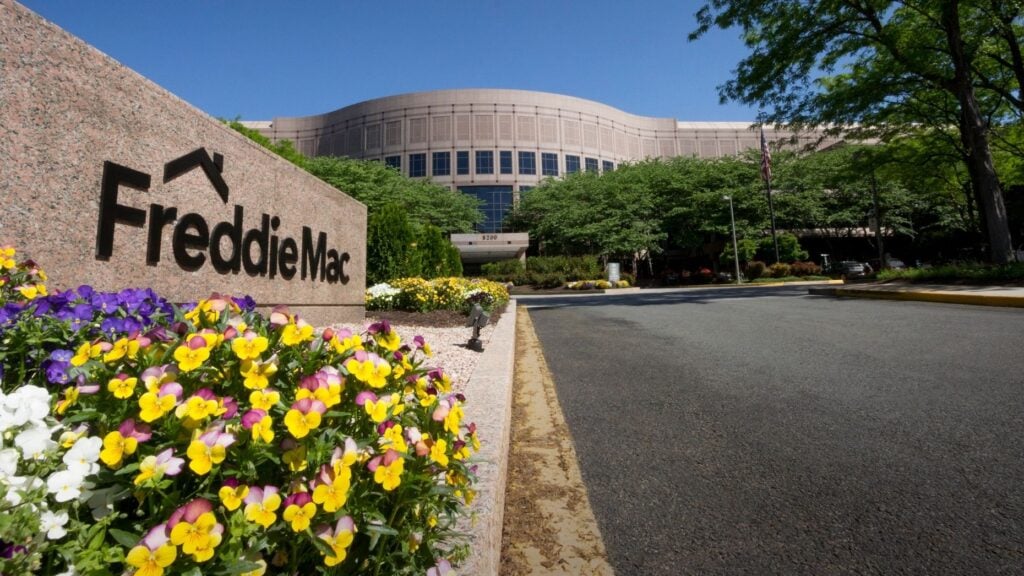In a shifting real estate market, the guidance and expertise that Inman imparts are never more valuable. Whether at our events, or with our daily news coverage and how-to journalism, we’re here to help you build your business, adopt the right tools — and make money. Join us in person in Las Vegas at Connect, and utilize your Select subscription for all the information you need to make the right decisions. When the waters get choppy, trust Inman to help you navigate.
In some markets, investors bought as many as one in every three homes sold during the fever pitch of the COVID housing market. But a new report from mortgage giant Freddie Mac says investor activity isn’t responsible for the meteoric rise in home prices over the past few years.
Targeting newly popular markets across the Sun Belt, investors gobbled up homes at record rates to flip or rent out.
New research by one of the largest mortgage lenders in the nation points to four key and at times compounding factors that helped drive the meteoric rise in home prices.
“What may surprise you is that investors don’t make our list of top drivers,” researchers from Freddie Mac wrote in a new analysis explaining the four key drivers of home price growth from the past two years.
Investors were responsible for buying 27.6 percent of homes in December, a slight uptick from 26.7 percent in 2019. Most of that increase was from institutional investors whose activity has spiked in recent months.
iBuyers, the companies that buy homes quickly and in cash and then resell them, aren’t decreasing the supply of homes, the report said. That’s because the the iBuyer giants, such as Opendoor and Offerpad, were buying homes in lower price brackets than first-time homebuyers.
“While large corporate investors are rapidly rising as a share of the market and are likely to expand, they remain so small that their market share only has a modest impact on the overall percentage of investors,” the report said.
All other investor segments account for 24 percent of the market, a share that has been mostly flat since 2000, the report said.
“In short, overall investor share of home purchases has risen only marginally since before the pandemic,” Freddie researchers wrote. “Most investor purchases were for deeply discounted homes priced below the typical home bought by first-time homebuyers.”
“Although investors are certainly contributing to the affordable housing shortage, they are not the driver of the tight supply of homes available for purchase.”
So, what were the primary drivers of the record price increases of the past few years? The researchers point to these four things.
Record low rates
It’s well-known by now that mortgage rates plunging to record lows near the end of 2020 helped to drive people to buy homes or refinance existing mortgages.
The type of drop that happened from 2018 to 2020 was one of three times in the past 20 years that a steep drop in rates preceded higher home price growth, the report said.
“The unusually large decline in mortgage rates benefitted those who refinanced, but unfortunately it also added more demand to an already undersupplied market,” the report said. “Since it is preferable for long-term stability to have home prices increase at a modest pace, one could argue that higher mortgage rates were what we needed since that would have helped balance supply and demand.”
Weak supply got weaker
Historic underbuilding of new homes has left the U.S. with a shortage of about 3.8 million homes nationwide, according to Freddie Mac’s research.
Researchers said supply was already at historic lows when the pandemic started and shuffled Americans all over the country.
Along with immediate economic uncertainty, the pandemic brought about government protection from foreclosures. Those protections kept people in their homes and dried up a common source of purchases for investors.
“At the same time that sales were increasing due to higher demand, the tight supply got even tighter as builders were slowed down by pandemic related issues and there were fewer distressed sales (both foreclosures and short sales),” according to the report.
Foreclosures and short sales — both sources of low-priced home sales for investors — fell from roughly 8 percent of sales to 3 percent during 2020 and 2021.
“The drop in distressed sales is unquestionably a good thing, but it did add slightly to an existing national housing shortage,” the report said.
The Freddie researchers added they don’t expect an unseen backlog of distressed properties about to hit the market — typically a source targeted by real estate investors for flipping or renting.
The millennial boom and great migration
There are 6.6 million more people between the ages of 25 and 34 than there were in 2006, a significant jump in the number of first-time homebuyers.
With rates low and other factors at play, many of them entered the market.
“There is a record number of people in the typical age range for first-time homebuyers…causing a strong increase in demand for both single and multifamily housing.”
Over the past 10 years, Freddie Mac’s share of first-time homebuyers rose from 36 percent in 2011 to 46 percent in 2021, the report said.
The COVID years provided employees with the flexibility to work from anywhere, which unleashed the final key driver of home price growth: migration.
Secondary markets that provided new quality of life amenities and lower home prices suddenly became a realistic place for millions of people to relocate.
Email Taylor Anderson



 Are You Interested in West Eleventh Residences Miami?
Are You Interested in West Eleventh Residences Miami? Are You Interested in ONE Park Tower by Turnberry?
Are You Interested in ONE Park Tower by Turnberry? Are You Interested in Diesel Wynwood Condominium?
Are You Interested in Diesel Wynwood Condominium? Are You Interested in Five Park Miami Beach?
Are You Interested in Five Park Miami Beach? Are You Interested in Cipriani Residences Miami?
Are You Interested in Cipriani Residences Miami? Are You Interested in Bentley Residences Miami?
Are You Interested in Bentley Residences Miami? Are You Interested in Baccarat Residences Brickell?
Are You Interested in Baccarat Residences Brickell? Are You Interested in Aria Reserve Miami?
Are You Interested in Aria Reserve Miami? Are You Interested in 888 Brickell Dolce & Gabbana | Miami?
Are You Interested in 888 Brickell Dolce & Gabbana | Miami? Are You Interested in 600 Miami WorldCenter?
Are You Interested in 600 Miami WorldCenter? Are You Interested in HUB MIAMI RESIDENCES?
Are You Interested in HUB MIAMI RESIDENCES? Are You Interested in WALDORF ASTORIA RESIDENCES?
Are You Interested in WALDORF ASTORIA RESIDENCES?